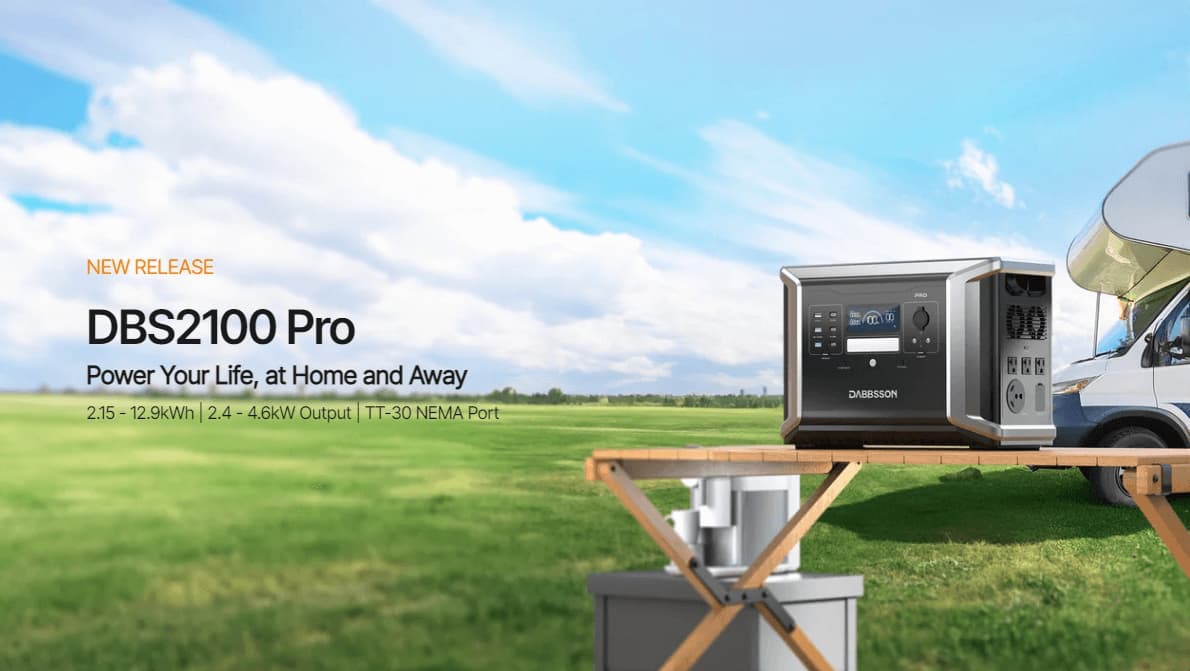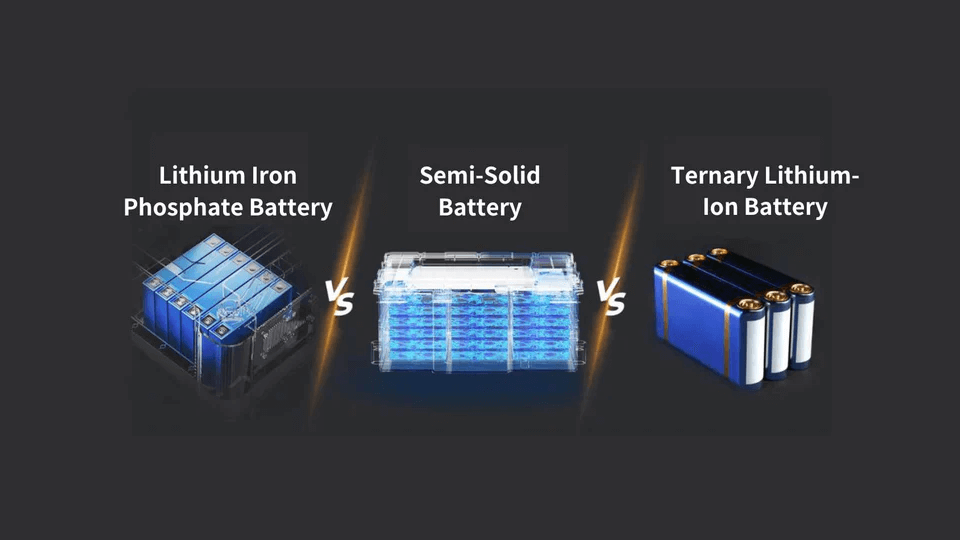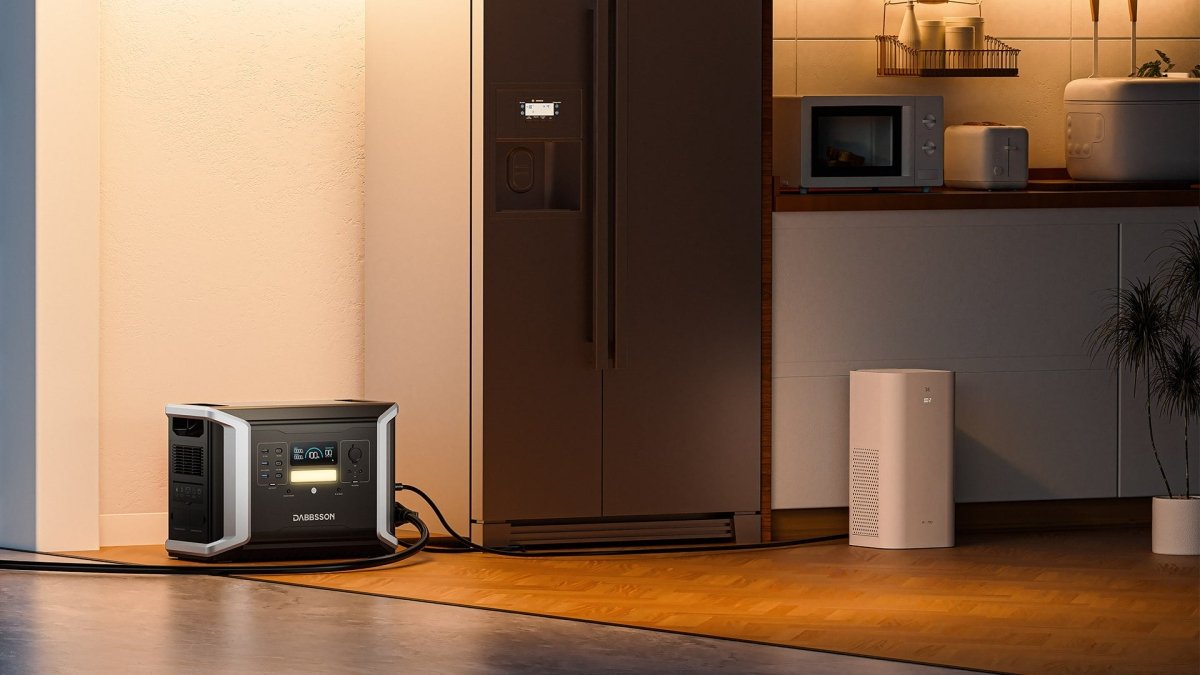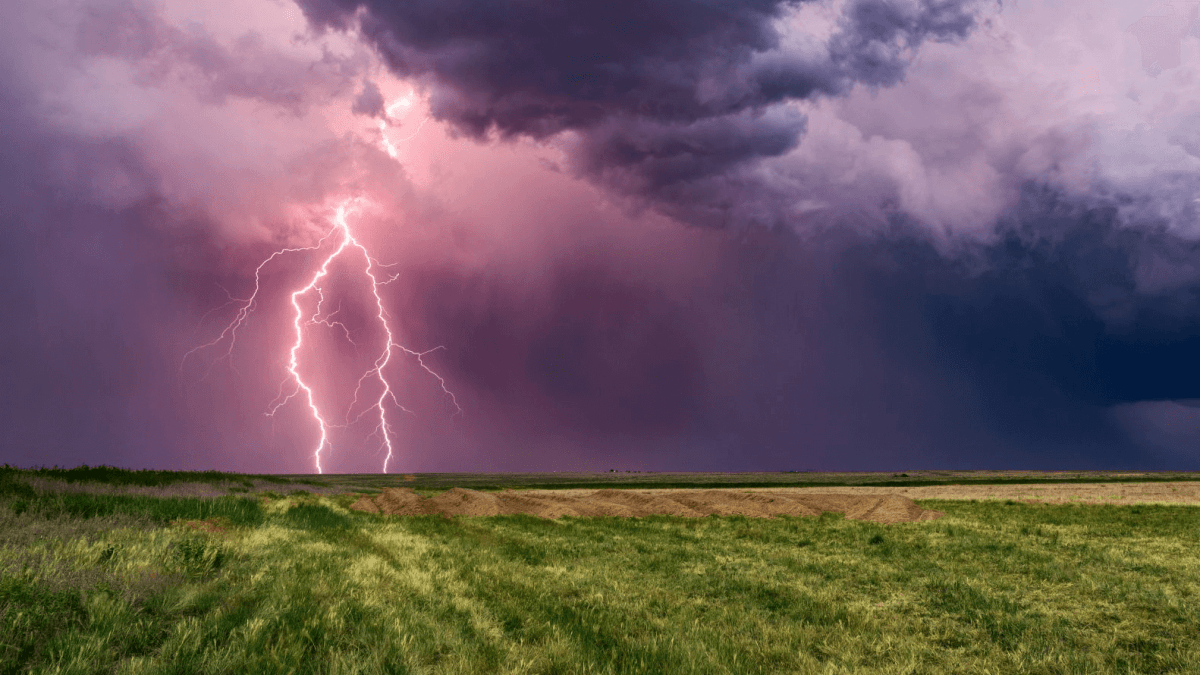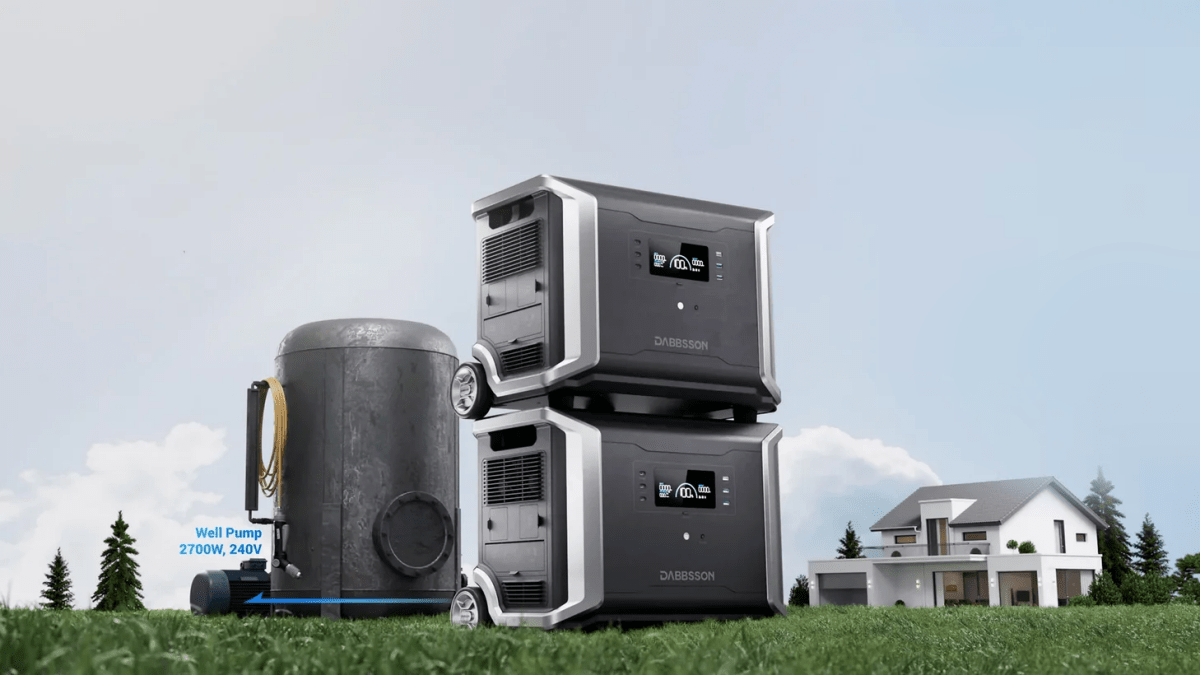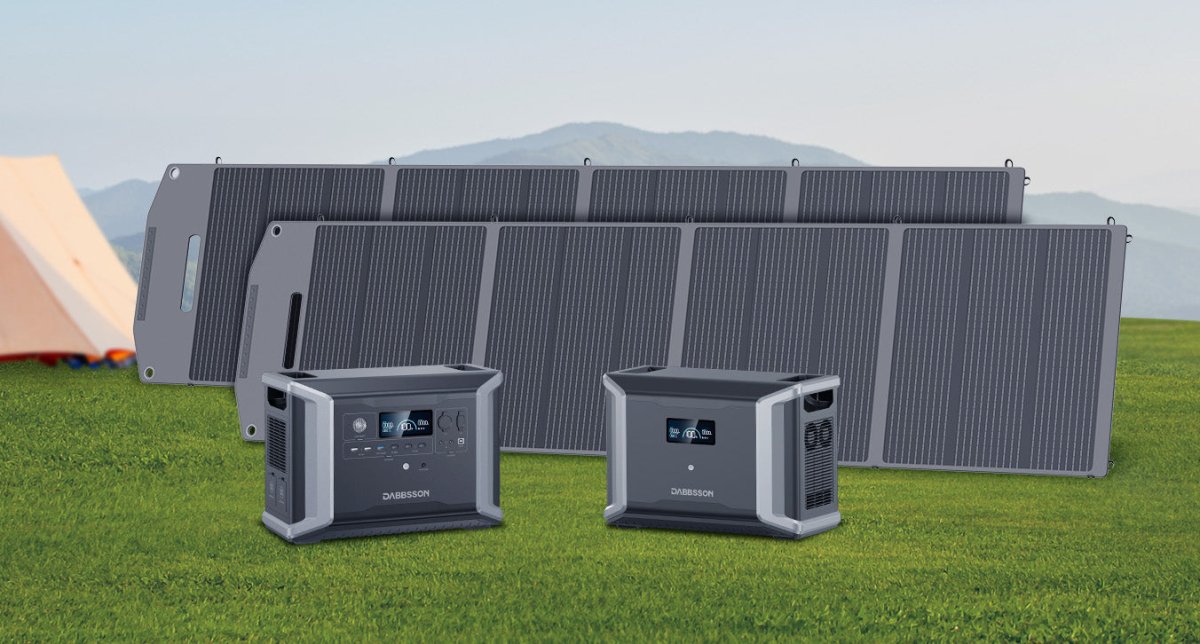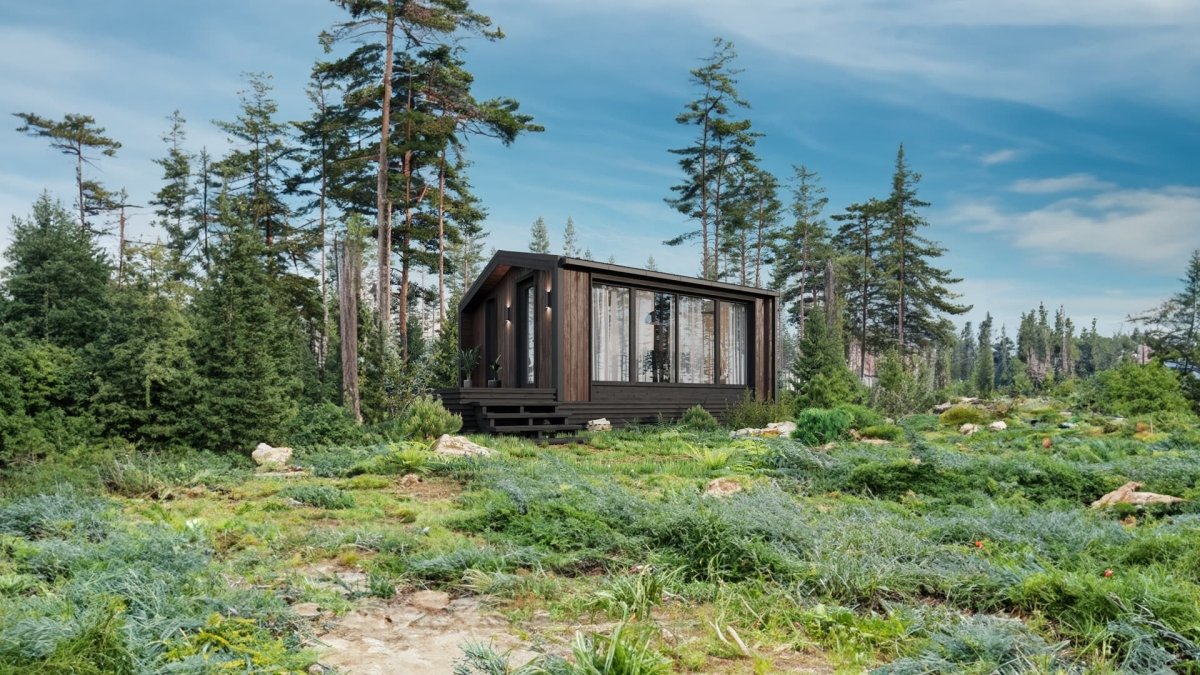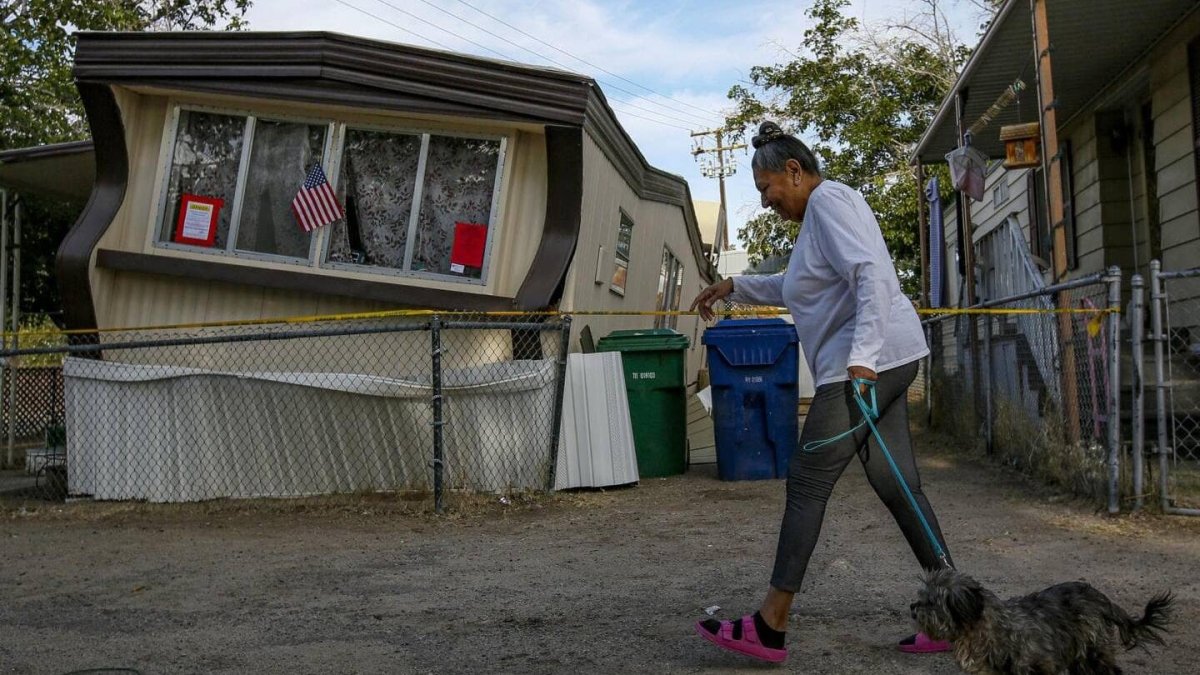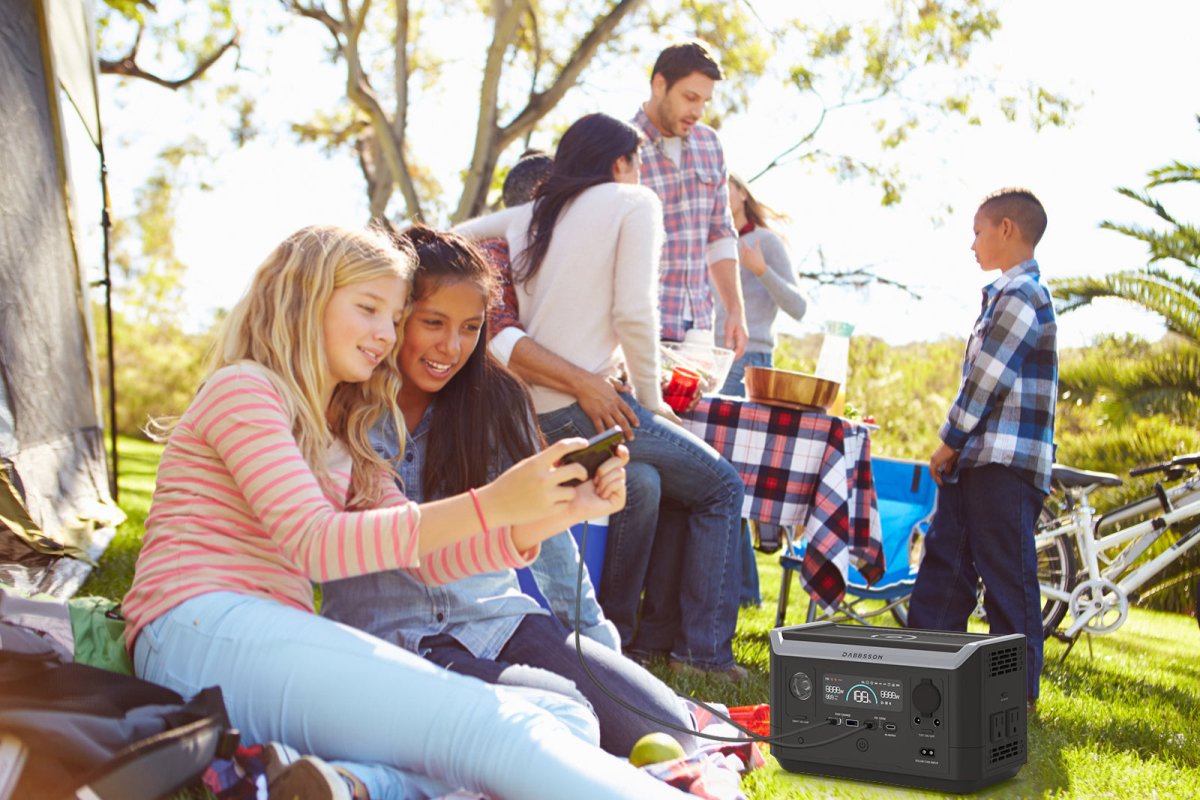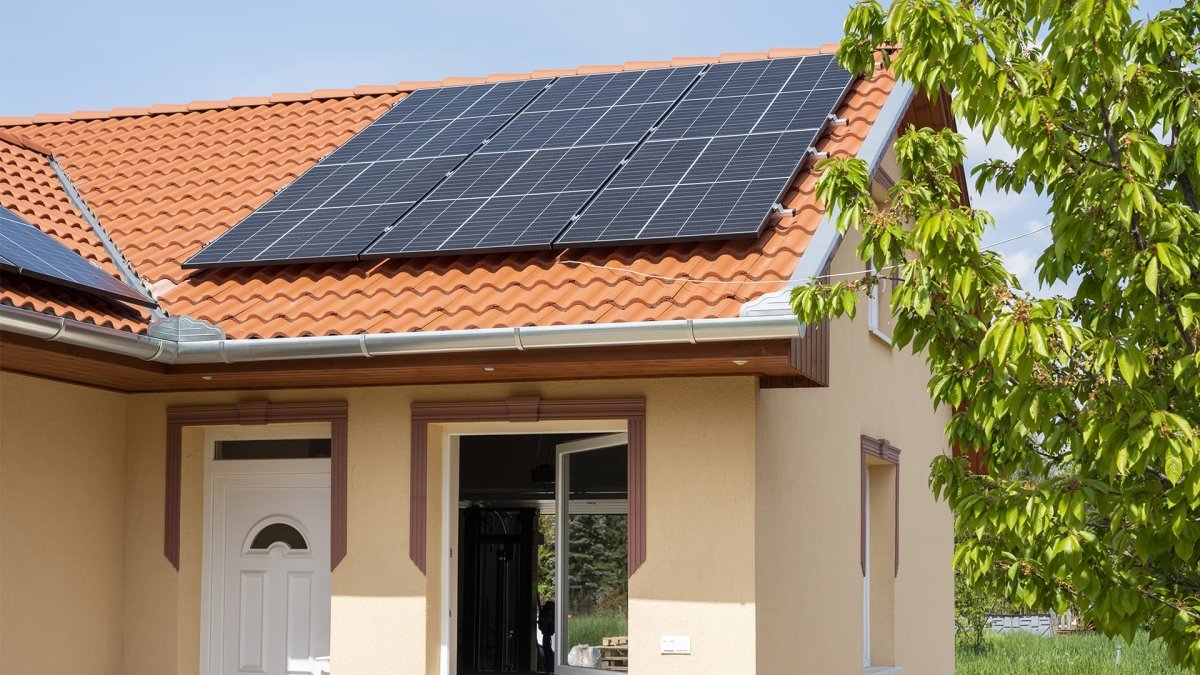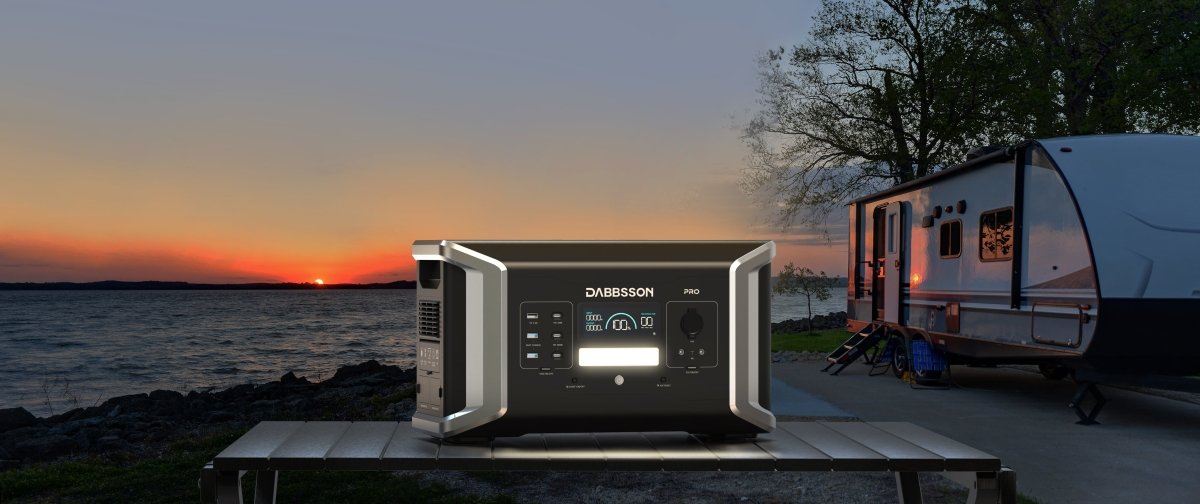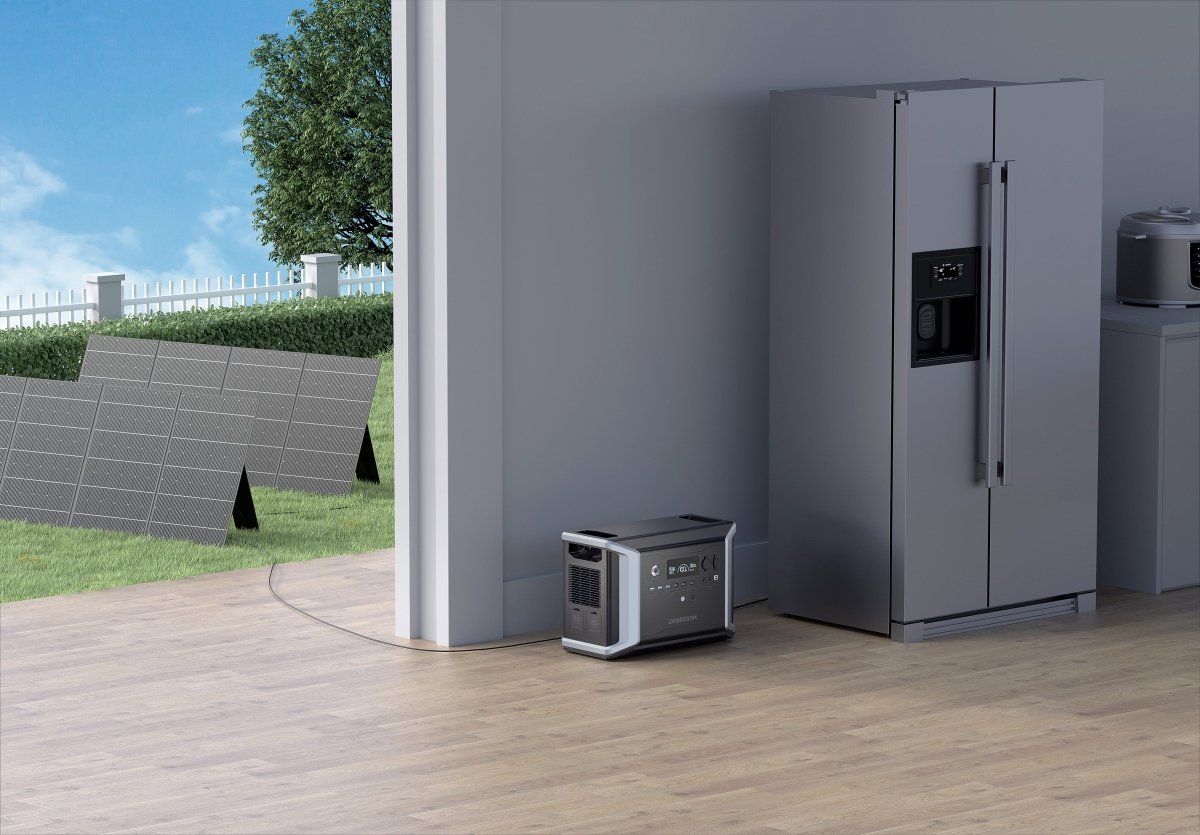Finding the Best Solar-Powered Backup Generator for Your Home in 2024
I. Importance of home backup power as blackouts become more common II. Dabbsson DBS1300 - Backup Power for ApartmentsA. SpecificationsB. ProsC. Cons III. Dabbsson DBS2300 Plus - Backup Power for Small HomesA. SpecificationsB. ProsC. Cons IV. Dabbsson DBS3500 - Whole-Home Backup PowerA. SpecificationsB. ProsC. Cons V. The Different Types of Home GeneratorsA. Portable GeneratorsB. Off-Grid Solar GeneratorsC. Portable Power StationsD. Hybrid Solar Generators VI. What to Consider When Comparing Home GeneratorsA. Power RequirementsB. SizeC. ReliabilityD. Noise LevelsD. Fuel SourceE. Environmental Impact and SafetyF. Warranties
VII. Final Thoughts
The Best Home Backup Generator from Dabbsson in 2024
Small Time Backup Power For Apartment: DBS1300 + 210W Portable Solar Panels
Medium Size Backup Power For Small Home: DBS2300 Plus + 210W Portable Solar Panels
Whole Home Backup Power For Large House: DBS3500 + 420W Portable Solar Panels
With blackouts becoming a regular occurrence rather than an occasional inconvenience, it's essential to be prepared for when—not if—your home loses access to the electricity grid, whether for a few hours or extended periods.
Now investing in home backup power, such as battery-based systems or generators is crucial for power outage can hit at anytime. Among them Generators are particularly effective for long-term outages because they produce power rather than just storing it, unlike battery-based solutions.
Solar generators from Dabbsson provide a variety of power outputs, storage capacities, charging methods, and connection choices. By selecting the right option, you can keep your lights on, watch TV, run your fridge, or even do laundry when the grid goes down.
Small Time Backup Power For Apartment: DBS1300 + 210W Portable Solar Panels
In the quest for an apartment-friendly generator, Dabbsson DBS1300 comes out to be the ideal option.
As traditional fuel generators are almost unusable in an apartment due to the toxic gases and deafening noise that it generate.
DBS1300 on the other hand with it’s quiet operation and clean operation, is perfect for an apartment.Pair with Dabbsson's 210W portable solar panel to harness renewable energy every day.
With 2×210W Solar Panels, you can do a full recharge in 4-6hours during the day from full sunlight and use that free power for backup or money saving purpose.
You can also charge DBS1300 from standard wall outlet and charge from 0% to 80% in just 44mins and 0-100% in to prepare for power outages.
For longer using time and more power, DBS1300 can be expanded to 4730Wh with 2 add-on batteries and you can even parallel connect it with another set of DBS1300 to get maximum 2000W rated output and 9460Wh capacity.
With 1200W output and 1330Wh, DBS1300 can run most of the essential home appliances for a good amount of time with multiple recharge ways.Specifications:
Capacity: 1330Wh
Add-on Capacity: Maximum 4730Wh with 2 DBS1700B extra batteries, 9460 with 2 DBS1300 + 4 DBS1700B
Parallel connection: connect two DBS1300 with parallel connector for 2000W rated output and 2660Wh
AC Output: 1200W rated output (surge 2400W), 2000W in parallel connection
USB-A: 2×12W, 1×18W
USB-C: 2×30W, 1×100W
Car charger: 12.6V, 10A 126W
AC Charging: 120V, 1000W
Solar Charging: 12-60V, 12A, 400W max
Car Charging: 12/24V, 8A
Weight: 36lbs (16kg)
Dimensions: 14.2 × 10.8 × 8.7in (36.2 × 27.5 × 22.1cm)
Charge cycles: 4500 cycles to 80% (4000 cycles + 500 cycles with BMS)
Warranty: 5 years
Pros:
Suitable for indoors and outdoors use
Pair with solar panels for unlimited amount of renewable energy.
All in one APP management wherever you go
Expendable capacity and output for versatile use
Dabbsson EV Semi-solid state LFP battery with 4500 cycles
Cons:
Not suitable for long-term blackout without add-on battery
1200W output may be challenging when powering multiple appliances.
Medium Size Backup Power For Small Home: DBS2300 Plus & 210W Portable Solar Panels
Large apartments and small homes calls for greater power supply and DBS2300 Plus is ready for the challenge.
With an output of 2200W and 2330Wh capacity, DBS2300 Plus can power 99% of household appliances perfect for home backup.
Connect 2 DBS2300 Plus with parallel connector to double the output and capacity to 4000W output and 4660Wh for more power consuming appliances and longer backup time.
Combing the parallel connection and 4 DBS3000B add-on batteries, DBS2300 Plus can expend to maximum 4000W output, 16kWh capacity enough to power your apartment or home for days.When use indoors, with the charging noise levels at a mere 40 dB, you can rest easy knowing you have reliable energy security without any disruption to your sleep.
If you choose to use solar panels for recharge, DBS2300 Plus can charge to 100% in 3-4 hours in peak sunlight with 4×210W solar panels enjoying renewable free energy everyday.
You can also pair solar with AC and get maximum 1800W charging capacity for 1.5-2 hrs quick recharge to reduce grid reliance on the grid and save on electricity bills.
The extra battery DBS3000B support standalone 1200W solar recharge unlike any other brand for flexible recharge.
Specifications:
Capacity: 2330Wh
Add-on Capacity: Maximum 8kWh with 2 DBS3000B extra batteries, 16kWh with 2 DBS2300 Plus + 4 DBS1700B
Parallel connection: connect two DBS2300 Plus with parallel connector for 4000W rated output and 4.6kWh
AC Output: 2200W rated output (surge 4400W), 4000W in parallel connection
USB-A: 2×12W, 1×18W
USB-C: 2×30W, 1×100W
Car charger: 12.6V, 10A 126W
AC Charging: 120V, 1800W
Solar Charging: 12-60V, 25A, 800W max
Car Charging: 12/24V, 8A
Weight: 54lbs (24.6kg)
Dimensions: 17 × 10 ×11.9in (43.2 × 25.4 × 30.3cm)
Charge cycles: 4500 cycles to 80% (4000 cycles + 500 cycles with BMS)
Warranty: 5 years
Prons:
Power 99% of home appliances with 2200W output and 2330Wh capacity
Expandable capacity from 2.3kWh to 16kWh, output from 2200W to 4000W
All in one APP management
Recharge with solar panels for unlimited free energy
Dabbsson EV Semi-solid state LFP battery with 4500 charge cycles
Cons:
Increased size and weight making it more difficult to move around compared with DBS1300.
Whole Home Backup Power For Large House: DBS3500 + 420W Portable Solar Panels
DBS3500 can power your entire home by pairing it with a transfer switch. When the power outage hits, just switch the DBS3500 on and enjoy backup power for entire house.
Connect two DBS3500 with DBS3500 parallel connector to get 240V, 7000W output and run almost any heavy-duty appliances at your home.Not only can you have 240V, 7000W output, you can also expand the capacity to up to 28kWh enough to power your home for weeks.Pair with maximum 4800W solar input, you can power your home without needing to use the grid ever.This can act as a long-term money-saving setup, as now you can run your home solely on free solar power.You can also charge DBS3500 on regular AC outlet and charge from 0-100% in 2.2 hrs.
Combine with Dabbsson App to set up a charging and output time, you can charge your DBS3500 when the electricity is cheaper and use it during the peak hours when the electricity is much expensive to save money.
DBS3500 is eligible for a 30% federal tax credit when install the Dabbsson DBS3500 as a home power solution. Talk with your tax adviser and get 30% saving to get your money back even faster.
Specifications:
Capacity: 3430Wh
Add-on Capacity: Maximum 14kWh with 2 DBS5300B extra batteries, 28kWh with 2 DBS3500 + 4 DBS5300B
Parallel connection: connect two DBS3500 with parallel connector for 240V 7000W rated output and 6.8kWh.
AC Output: 3600W rated output (surge 7200W), 240V 7000W in parallel connection
USB-A: 1×12W, 2×18W
USB-C: 1×30W, 2×100W
Car charger: 12.6V, 10A 126W
AC Charging: 120V, 1800W
Solar Charging: 12-150V, 25A, 2400W max
Car Charging: 12/24V, 8A
Weight: 90.5lbs (41.06kg)
Dimensions: 21 × 12 ×15.5in (53.3 × 30.5 × 39.3cm)
Charge cycles: 4500 cycles to 80% (4000 cycles + 500 cycles with BMS)
Warranty: 5 years
Pros:
1. High 3600W output to run almost all the household appliances.2. Parallel connecting two DBS3500 to get 240V 7000W for heavy-duty appliances.3. Expandable to 28kWh for weeks of backup power4. Can be integrated with transfer switch to power entire house5. Massive solar charging capacity to run your house on renewable energy6. Pod and wheels to move the heavy units.Cons:1. DBS3500 can be difficult to move around when you can’t wheel it
The Different Types of Home Generators
When choosing a home generator, it's essential to compare similar options. Some generators can power your entire home, while others only provide enough output for critical appliances and personal electronics. Home backup power generators vary in capabilities and limitations based on their fuel source and other factors. Here's a breakdown of the basic types of home backup power generators.
Portable Generators
Traditional portable generators are smaller units that you can store discreetly and bring out during an outage. They typically power essential appliances rather than the entire house and run on fossil fuels like propane, diesel, gasoline, or natural gas. The main downside is that they’re noisy and produce toxic emissions like carbon monoxide. You can’t operate them indoors, and they require a constant fuel supply.
Off-Grid Solar Generators
Solar generators are a modern alternative that doesn’t require fossil fuel, are safe to operate indoors, and are virtually silent. They capture sunlight with PV modules like solar panels and convert it to electricity using the photovoltaic effect. Solar panels need a portable power station or other balance of system to convert and store the electricity produced.
Portable Power Stations
A portable power station is essentially a large battery that stores electricity for later use. While it can’t generate power independently, it’s useful for storing backup energy for emergency outages. Brands like Dabbsson offer portable power stations that can be charged with solar panels, creating a solar generator. You can also recharge them using AC electricity, a car adapter, or USB-C. Charging with solar panels is slower than a wall plug but results in a clean, renewable energy source.
Hybrid Solar Generators
Hybrid solar generators combine solar power and battery storage, offering the benefits of both off-grid independence and on-grid convenience. Systems like the Dabbsson Power Stations provide multiple charging options, including AC grid power and DC car adapters, and can function independently of the grid as long as there is sufficient sunlight. They save money and keep your home running during extended power outages.
What to Consider When Comparing Home Generators
Choosing the right generator for your home requires careful consideration of several crucial factors. Here’s what you need to keep in mind before making your backup power investment:
Power Requirements
Start by determining how much power you need during an extended blackout. For a few appliances and personal devices like smartphones and laptops, a small generator may suffice. However, to keep your entire house running as usual, you'll need a high-capacity battery backup solution or a standby generator.
Size
Opt for the smallest generator that meets your needs. A compact unit is typically the best choice for home backup requirements, as it’s easier to store and access quickly during a power outage. Portable generators are also great for off-grid applications like camping and RV life. If you spend significant time in a van or RV, compact off-grid power solutions like Dabbsson Power Station are ideal.
Reliability
Your backup power source needs to be reliable when a blackout hits. If possible, invest in a generator that kicks in automatically or at least one that’s easy to activate without fumbling in the dark. The best option is a generator that integrates with your home’s electrical circuits for seamless power transition.
Noise Levels
Consider the noise level of the generator. Fossil fuel generators are typically very noisy, while battery backups and solar generators operate almost silently. Both you and your neighbors will appreciate a quieter option.
Fuel Source
Fuel availability and storage are important considerations. Gasoline has a short shelf life and can be expensive, whereas propane is a more stable and economical option. Units connected to your home’s natural gas line can activate seamlessly during an outage, but this may increase your energy bill. Solar power and battery backups are cost-effective and environmentally friendly alternatives.
Environmental Impact and Safety
Traditional generators burn fossil fuels and release harmful emissions like carbon monoxide and greenhouse gases. These emissions can be dangerous to your health and the environment. Using clean, renewable solar power will keep your family safe from toxic emissions and reduce your carbon footprint.
Warranties
A backup power generator is a significant investment, so look for a warranty that offers long-term protection. Choose a brand or manufacturer known for the durability and reliability of its products to ensure peace of mind.
By carefully considering these factors, you can make an informed decision and choose the best generator for your home’s needs.
Final Thoughts
Purchasing and installing a home generator is the best way to prepare for inevitable utility grid failures. Investing in energy security is essential for your family's safety, but it's not a cheap endeavor. Carefully calculate your electricity needs and consider the impact of a home generator like the Dabbsson DBS3500 on your budget, your family’s health, and the environment. Dabbsson offers solar generators for every home and using case.
Solar Energy
May 25, 2024
